Tuesday, July 22, 2008
Nurturing young minds through arts
Nurturing young minds through arts
2008/07/16
NORMAH Nordin, a cultural big gun, weighs in on the matter of deliberate parenting and also the importance of the arts.
“Yes, parents definitely have to be more responsible in the development of their children,” said Normah.
She added that “deliberate parenting is a style of bringing up children that acknowledges the importance of nurturing the minds of children by their parents. Children today are smart and gifted and it is our duty to see that they reach their full potential. I must also add that the arts is an important part of society that can complement deliberate parenting. Children can discuss issues amongst their peers by watching plays on matters that interest them, which parents do not necessarily discuss with them.”
Share
Posted by TheBorhann at 6:09 AM 0 comments
Labels: Nurturing young minds through arts
Saturday, July 12, 2008
Picasso, like you’ve never seen him
Saturday July 12, 2008
Picasso, like you’ve never seen him
By ALEXANDRA WONG
How does a philistine appreciate art that has been called everything from revolutionary to downright baffling? Perhaps the key is in finding out what made him tick.
We cordially invite you to cover the Picasso exhibition, which has never been held outside of Europe.”
I reread the invitation, hardly able to believe my luck. Picasso in Australia — it’s a giant of a story. Yet I’ve never felt more like a blank canvas in my life.
Like most of the world’s population, I have never laid eyes on an actual Picasso. I have only a vague impression of him, culled from piecemeal anecdotes and layman opinions: his works are said to be so abstract and enigmatic, some baffled snarks have even likened them to a car crash.
How on earth would I, a philistine where art is concerned, be able to appreciate them?
Visitors admire the great artist’s private collection of artwork.
A day before I fly to Brisbane, I pose my conundrum to my cousin Justin, my family’s Unofficial Walking Discovery Channel: “How do you appreciate something you can’t understand?”
He thinks for a while, before saying, “Have you heard the legend of the Benedictine monk who discovered Dom Perignon champagne? He was so delighted he ran out of the cellar and yelled, ‘Come come! I’ve tasted stars!’ We all know that it’s a physical impossibility, but you get my drift, right?”
A departure from previous exhibitions
At the standing-room-only media preview, even the most veteran newsmen look unusually excited. Picasso & His Collection is more than an art aficionado’s wet dream come true.
Not only do we get to eyeball his most talked-about works, we are also given a rare insight into the artist’s aesthetic and personal influences. Hung alongside his paintings are more than 100 works from his private art collection and a massive catalogue of photographic and documentary material from his life.
There are paintings by 35 artists, including Chardin, Matisse, Renoir, Cezanne and Rousseau. There is a selection of Oceanic and African masks and sculpture dating from the 6th century BCE, which were critical in the evolution of Picasso’s work. There are intimate footage of the artist’s studio and candid photos from his personal life.
This emphasis on context underscores Picasso’s own view that perceptions and interpretations evolve with everyday experiences and interactions.
Anna Baldassari, director of Musee National Picasso, Paris, and curator of Picasso & His Collection, says, “Picasso had a very contemporary attitude. He believed in the knowledge of different perspectives. A painting is not just a painting: there is the context, the full story, things that happen around the story.”
The Gallery of Modern Art is not just for show and tell; visitors also get to leave their mark. Near the Children’s Art Centre there are walls for visitors to fill in the speech bubbles with their thoughts about the exhibition.
Tony Ellwood, Gallery of Modern Art director, adds, “This exhibition is a deliberate dialogue. Art should not be just self-referential. It should be informed by the world outside.”
Picasso & His Collection attempts to show what made Picasso the artist he was. For this reason alone, the exhibition ranks as one of the most important historical milestones in modern art. Coming hot on the heels of the hugely successful Andy Warhol exhibition earlier this year, it is expected to cement Queensland’s budding reputation as a cultural mecca.
An icon of modern elegance, the Gallery of Modern Art is a fine venue in which to pay homage to the Father of Modern Art.
Debunking myths
A first-timer in Queensland, I’m not really qualified to comment on Queensland’s reputation, but the exhibition does quickly overturn every preconceived notion I’ve ever held about the Spanish artist.
Cubism? Blue period? Surrealism? Forget high-brow concepts that would sail over most laymen’s heads. If before I’d only known him as the head-scratching painter of odd human figures with awkwardly juxtaposed anatomy, this exhibition reveals a startling range and versatility that is impossible to confine to any genre, or, for that matter, period.
Cheeky caricatures of men and women engaged in debaucheries abound but there’s a grittiness to them that suggests he wasn’t just a dirty old man. In Erotic Scene, a series of etchings inspired by the monotypes of Degas, the irreverent illustrations of brothel scenes possess an ambiguity that suggests they could also be a mocking nod to his own ageing self.
Even at its most enigmatic, his art is weirdly tactile. The befuddling human limbs invite the eye to search for an underlying logic and their reason for being. In La coiffure (Hairdressing), an oil on canvas of his paramour Dora Maar, one wonders what Picasso’s real motivation was, because he certainly wasn’t doing his model any favours. With her bulging, off-set eyes, narrow forehead, and exaggerated curving nostrils, her face can only be flatteringly described as a battlefield.
And when you least expect it, he throws a curveball.
What’s with Returning from the Christening, after Le Nain, a psychedelic riot of rainbow colours, that could have very well been a graffiti from the hippie 60s? It seems almost anomalous among his other abstract flights of fancy, and yet, there is a joie de vivre that tells us, yes, this is the same guy who drew that strange but compelling piece of naked women looking at the sky. (Bathers Watching an Aeroplane).
Talk about messing with our heads.
The artist and his life
All that eye candy invariably whets my appetite to dig up more about the man.
I head straight for the exhibition book shop, which features memorabilia and literature on the artist. Out of the rows of biographies, I pick out the one by Olivier Widmaier Picasso, simply titled Picasso: The Real Family History.
The Gallery of Modern Art also strives to foster arts awareness early through its Children’s Art Centre, which is running the programme “Yo Picasso Kids” to introduce children to Picasso and his ideas. — ALEXANDRA WONG & GALLERY OF MODERN ART, QUEENSLAND
Olivier’s grandmother Marie-Thérèse, I discover, was the artist’s muse and lover. To his credit, Olivier does not mince words about his grandfather’s way with the ladies, but points out that some of his most extraordinary portraiture were inspired by the women in his life.
“He listened only to his instinct — and his love. He loved like a madman,” Olivier declares. “He had a passion for other people. Without that, his work would be . . . empty of meaning.”
Olivier is an arresting storyteller. As I thumb through the heavy volume, I feel like I’m a fly on the wall in the artist’s working spaces in Horta, Barcelona and Lucia, while he paints his life before my eyes.
His life often as dramatic as his works. Marie-Thérèse simply called him “a wonderful terror”.
Art at its purest
Before finally leaving the hallowed halls of the gallery, I revisit a pen-and-ink self-portrait Picasso drew circa 1917-1918. It is one of his simplest yet most expressive works. In a few clean, deft strokes, he captured the spirit of his persona and life.
The caricature of the artist in a long coat, cigarette sticking out from the side of his mouth, is all at once irreverent, bold, visionary and unmistakably human.
As a layman, I realise that I may never be able to fully understand, or articulate, my appreciation of his work, but I have to say his work still possessed the uncanny power to move me. Perhaps that’s the source of his genius: his power doesn’t just come from a keen eye, or a knack for aesthetics, but because it draws from the deepest wells of human emotion.
And that, perhaps, is the greatest value of this exhibition. It showed me that Picasso was as much a human as he was a great artist.
As I stand there filling my eyes, I finally begin to understand what my cousin meant. This must be how the monk felt when he tasted “stars”.
o For more information on Picasso & His Collection, visit www.qag.qld.gov.au/picasso. The exhibition will be on display at the Gallery of Modern Art, South Bank, Queensland until Sept 14.
Posted by TheBorhann at 8:48 AM 0 comments
Labels: like you’ve never seen him, Picasso
Subscribe to:
Post Comments (Atom)






















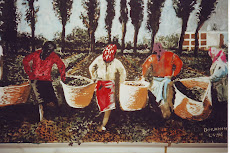

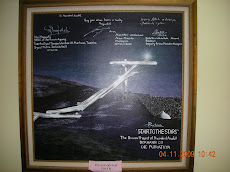





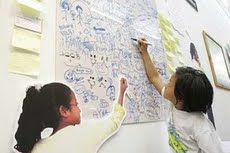

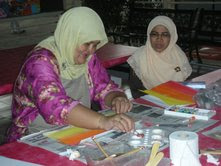.jpg)

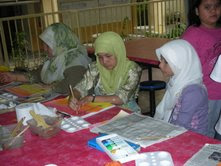


No comments:
Post a Comment